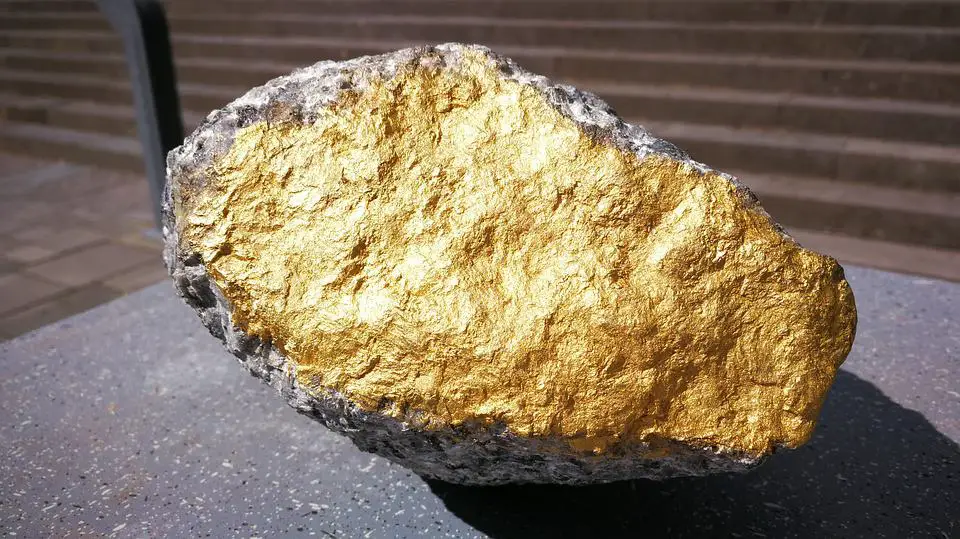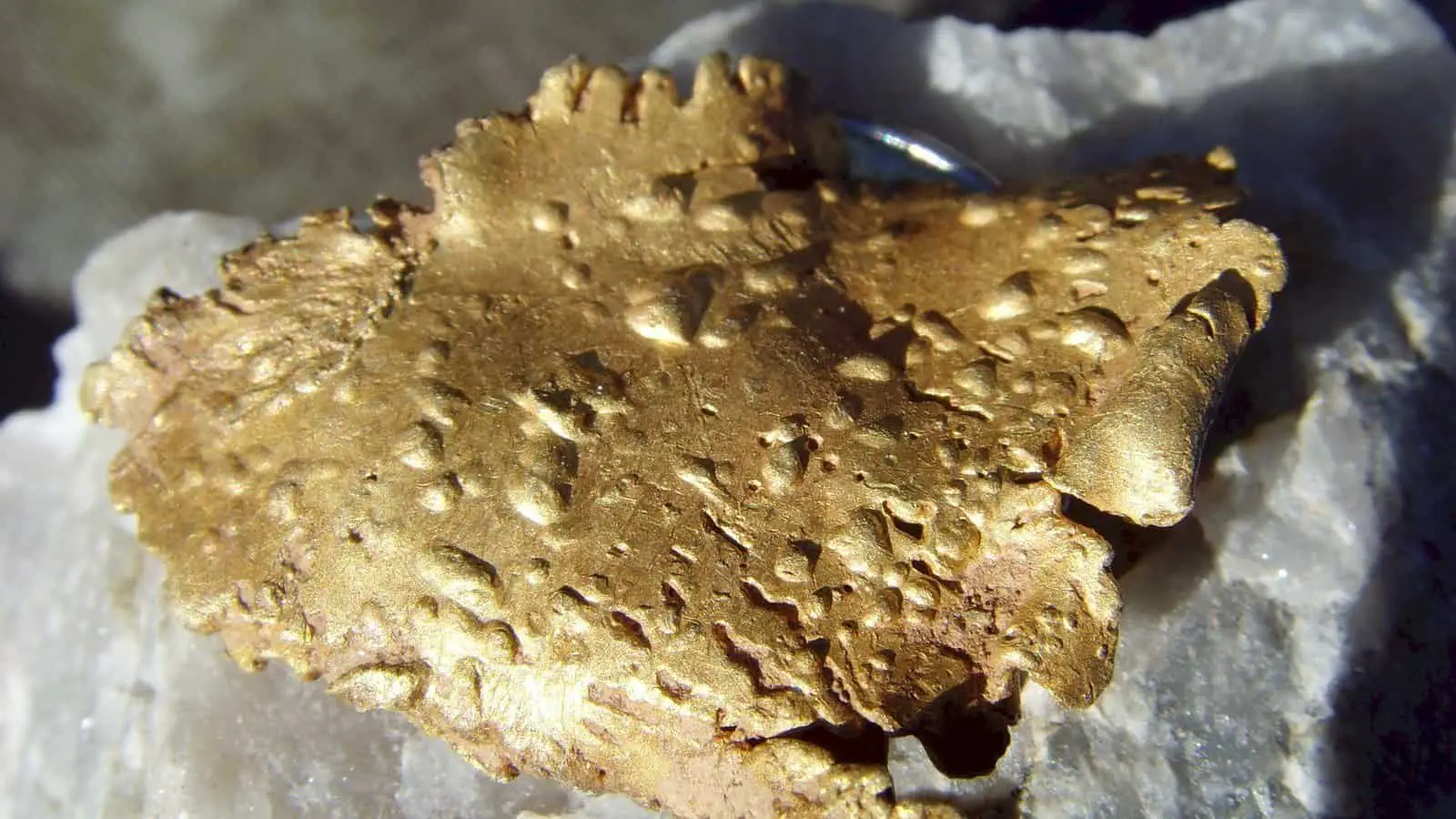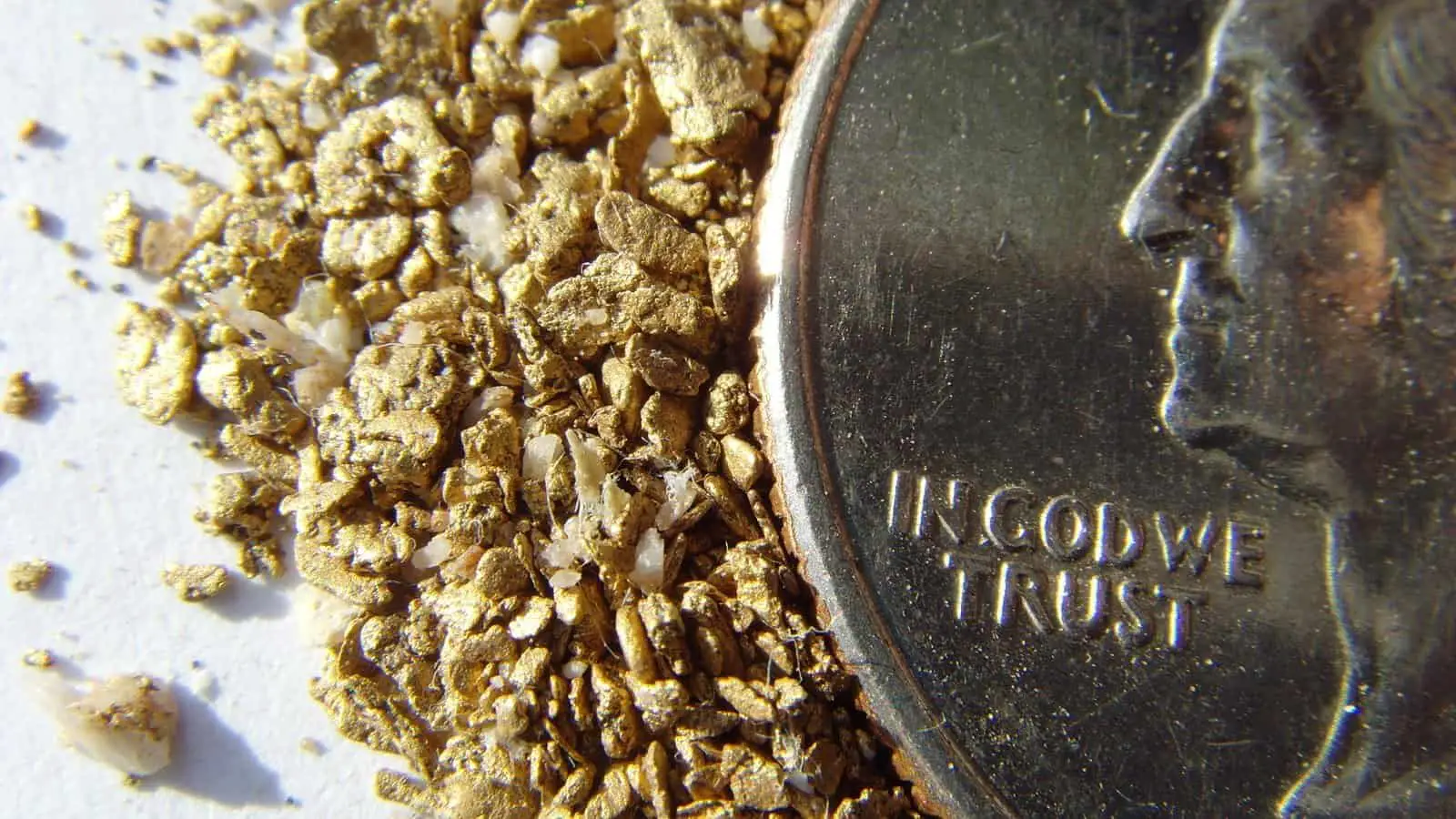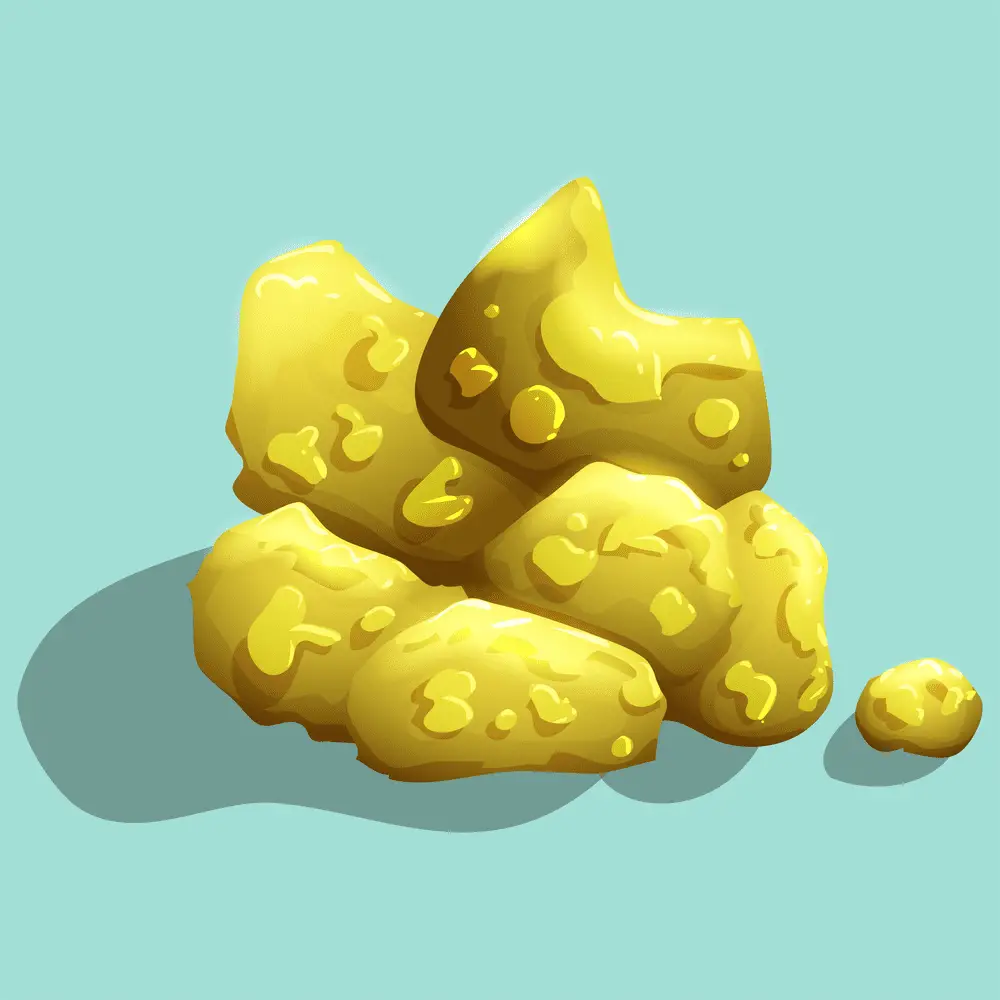Table of Contents
*This post may contain affiliate links. As an Amazon Associate we earn from qualifying purchases.
Gold is a precious metal and also a chemical element with atomic number 79. When not mixed with other metals it is reddish yellow, heavy, soft, easy to work with, and conducts electricity readily.
Gold is part of a group of metals called noble metals, which include gold, silver, and platinum; they all resist chemical action, do not corrode, and are not easily changed by acids. Gold is usually found in gold ore.
Gold has been highly valued by ancient cultures and is still highly valued today. Gold is used in jewel-making, conducts electricity, doesn’t tarnish, mixes or alloys well with other metals, and can readily be made into wires or sheets. About 78 percent of the world’s gold currently goes into jewelry. Gold has a naturally brilliant luster and glossy shine.
Gold used to guarantee various world currencies and is still used as a reserve. Gold prices flucuatate but in recent years have stayed within the $1,000 to $2,000 per ounce range.
Current events, market speculation, currency values, supply and demand, and buying power all influence the current, or spot price of gold. Gold prices change every few seconds because of these various factors.
Scientists think that gold was originally produced in the universe in supernova nucleosynthesis. They also theorize it was produced by the collision of neutron stars and was present in the dust from which the solar system formed. In the earth, during its molten formation stage, most of the native gold sunk into the core.
Most of the gold at the crust and mantle layers was probably delivered via asteroid impact.
Gold sometimes occurs as a lode deposit in small amounts in rock, known as gold ore. Gold can also be found in alluvial deposits known as placer deposits, as flakes, grains, or nuggets.
To try to find some gold ore or nuggets of your own you can get a personal mining kit. The most popular mining kits can be found by clicking here.
What Is Gold Ore?

An ore is a naturally occurring rock or sediment with enough minerals that are considered economically important enough to extricate. Ores can be either metals or gems. Ores are taken out of the earth in the process of mining and refined or smelted to remove the valuable materials.
The concentration of an ore and how it occurs affects its cost of extraction, and miners must weigh whether it is economically viable to do so. Various geological processes from ores, also known as ore genesis. Gold is a type of noble metal that can be extracted from ore.
Most of the world’s gold ore mining currently takes place in Russia and South Africa.
Major gold rushes took place in the 19th century in New Zealand, and Australia, Brazil, Canada, South Africa, and the United States, notably California, Gold rushes extend as far back to the Roman Empire and probably as far back as Ancient Egypt.
Types of Gold Ore
There are four types of gold ore including:
Hydrothermal Epigenetic Deposits
- Such as mesothermal lode gold deposits, Archaean conglomerate hosted gold-uranium deposits, and Carlin-type gold deposits (such as epithermal stockwork vein deposits)
Granite-Related Hydrothermal Deposits
- Such as iron oxide copper-gold deposits (IOCG), porphyry copper/gold deposits, intrusive-related copper-gold deposits
Sedimentary deposits
- Including alluvial gold black sand deposits
Sedimentary hydrothermal deposits
- Including exhalative spilite-chert hosted gold deposits
What Does Gold Ore Look Like?

Gold, a naturally formed mineral usually having traces of silver. It may also have traces of copper and iron. A gold nugget is the most valuable form of gold, at 70 to 95 percent gold (the rest is usually silver). Gold can be bright yellow. But when more silver is mixed in, it can appear whitish.
Most of the gold found by miners is taken from gold ore, not nuggets or flakes. The ore is usually brown, a metallic iron color, or mixed with a large white quartz rock that has very little gold in it.
Gold ore may not be easily recognizable to the untrained eye. Fortunately, gold has many distinguishing characteristics, such as its heavyweight (specific gravity: 19.3). Alluvial gold may be panned because it sinks to the bottom of the pan.
Gold is also very malleable–for example, it can be flattened to less than .00065 centimeters, and 28 grams of gold can stretch out 75 kilometers. Gold will not change color, crumble, or tarnish, and is unaffected by most solvents.
Gold sometimes occurs along with pyrite, or fools’ gold, and it may not be noticed because they highly resemble each other. When the pyrite-gold mix is heated, the pyrite dissolves, and the “roasted gold” is left intact.
Recognizing Gold Ore: What to Look For

Gold mixes with different minerals, which will affect the look of the ore. If you are looking for larger chunks of gold, stick to lode deposits, where plate tectonic activity has brought gold to the surface. Lode deposits usually form gold in larger veins, so it should be easier to see. Smaller flecks of gold are more common in placer deposit gold ore, which tends to look like that area’s sedimentary rocks.
In mineral terms, cleavage is how a mineral breaks when subject to stress on a particular plane. Gold does not exhibit cleavage. In some cases, there will be clear evidence of quartz and sulfide minerals surrounding gold veins. Gold ore can resemble quartz with spotty areas of gold.
According to the Environmental Protection Agency, gold is commonly mixed (alloyed) with silver and other metals. The ore may, therefore, contain sulfides like arsenic, copper, iron, and silver.
The ore does not commonly have visible shiny gold on the surface. Spotting it with the naked eye may not be possible. Using a jeweler’s loupe, it is possible to see flecks of gold sometimes.
Some forms of the ore are indistinguishable from their surrounding metals. Pyrite and arsenopyrite (iron pyrite) sometimes carry invisible quantities of tiny pieces of gold. Gold can also mix with other metals within the ore, and may only be revealed after mining is completed and testing can begin.
For example, pyrite will scratch glass but real gold will not. Gold is not magnetic, but iron pyrite will be attracted to a magnet. Real gold will show a gold streak when scratched against an unglazed ceramic tile, but iron pyrite leaves a black streak.
It is possible to detect gold with a specially designated metal detector. A prospecting detector can find gold as small as a half a grain. As the size of the gold becomes larger, gold nuggets can be located at deeper depths. A single grain nugget can be found at a depth of 1-2 inches. However, metal detectors cannot usually detect gold hidden in ore.
Conclusion
Gold is a highly valued noble metal and also a chemical element. It is reddish yellow, heavy, soft, easy to work with, and conducts electricity readily. Gold resists chemical action, does not corrode, and is not easily changed by acids.
Gold, valued since ancient times, is still highly valued today. Gold is used in jewel-making, conducts electricity, doesn’t tarnish, mixes or alloys well with other metals, and can readily be made into wires or sheets. Many factors, including currency values and current events, affect the spot price of gold, which changes by the minute.
Scientists think that gold was originally produced in the universe in supernova nucleosynthesis. Most of the gold at the crust and mantle layers was probably delivered via asteroid impact. Gold sometimes occurs as a lode deposit in small amounts in rock, known as gold ore. Gold can also be found in alluvial deposits known as placer deposits, as flakes, grains, or nuggets.
Ore, a naturally occurring rock or sediment with enough minerals, must be considered economically important enough to extricate. Ores can be either metals or gems. Ores are taken out of the earth in the process of mining and refined or smelted to remove the valuable materials.
Gold is a type of valuable metal that can be extracted from ore. Most of the world’s gold ore mining currently takes place in Russia and South Africa, but gold has been pursued in its various forms for thousands of years, sometimes in events such as California’s Gold Rush.
The various types of the ores include hydrothermal epigenetic deposits, granite-related hydrothermal deposits, sedimentary deposits, and sedimentary hydrothermal deposits.
Gold can be bright yellow, but more typically it is mixed with silver and appears whitish. Most of the gold found by miners is taken from gold ore, not nuggets or flakes. The ore is usually brown, a metallic iron color, or mixed with a large white quartz rock that has very little gold in it.
Gold is heavy and highly malleable. Gold will not change color, crumble, or tarnish, and is unaffected by most solvents. Gold is commonly alloyed with silver and other metals. The ore may, therefore, contain sulfides like arsenic, copper, iron, and silver.
Gold ore does not usually have any shiny gold on the surface. Spotting it with the untrained eye does not always yield results; it’s better to try a jeweler’s loupe. Then it is possible to see flecks of gold sometimes. It is usually not possible to find gold ore with a metal detector.

